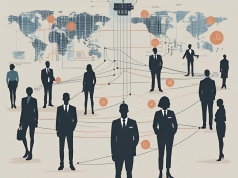The gig economy has emerged as a bastion of flexibility and opportunity in the modern workforce. A reflection of the ever-evolving job market, it heralds a new era for those who seek to break free from the constraints of traditional 9-to-5 jobs. Digital platforms, the vanguard of this revolution, have not only redefined how we conceptualize work but have also unveiled a spectrum of possibilities for personal and professional development.
This metamorphosis of the workplace is a narrative rich in complexity and nuance, echoing the diversity of coverage found in publications such as The New York Times. In this analysis, we delve deep into the gig economy’s fabric, unwrapping its layers and examining the threads that weave the present and future of work.
The allure of the gig economy is primarily its flexibility. Workers today can clock in from anywhere at any time, selecting tasks that align with their skills and interests. This democratization of work opportunities has leveled the playing field, providing access to a wider demographic, irrespective of geography or background. Digital platforms serve as the conduits that connect talent with demand, enabling individuals to monetize their skills in ways that were once inconceivable.
However, this modern-day gold rush is not without its pitfalls. The gig economy has sparked conversations around worker rights and job security. Gig workers often navigate a labyrinth of uncertainties, from fluctuating incomes to the absence of benefits typically afforded to full-time employees. Furthermore, as the gig economy blooms, it nudges traditional employers to rethink their models, impacting everything from corporate culture to benefits and stability.
This transformation also prompts us to question the ethical and regulatory frameworks within which the gig economy operates. As much as these platforms have been catalysts for freedom and innovation, they also shoulder the responsibility for ensuring fair practices and safeguarding worker rights. Policymakers and industry leaders are thus faced with the challenge of shaping regulations that foster growth while protecting those who drive it.
Moreover, in examining the gig economy’s trajectory, it is essential to consider its implications on the overall economy. While it can be a wellspring of entrepreneurship and a gateway to the broader marketplace for many, it can also contribute to economic volatility and uncertainty for others.
For those who look to navigate this landscape, the key lies in adaptability and continuous learning. Embracing digital platforms as tools for professional growth while being mindful of their limitations is paramount. As technology continues to advance, the savvy gig worker must remain vigilant and proactive, leveraging these platforms to build a sustainable and fulfilling career.
Looking ahead, we anticipate further advancements in technology, such as artificial intelligence and blockchain, to refine and reshape the gig economy. The prospect of smarter matchmaking between projects and professionals, more secure transactions, and an even broader array of opportunities is on the horizon.
In conclusion, the gig economy, spurred by digital platforms, is an unfolding story of innovation, challenge, and change. It is a narrative that resonates with the diversity and dynamism seen in the pages of The New York Times, and one that will continue to captivate and influence the discourse on the future of work. For the workers, employers, and policymakers, the journey ahead is one that requires both caution and courage, as they steer the course of this ever-evolving landscape.

























